Joy Neal Kidney's Blog, page 65
August 13, 2021
Five Things You May Not Know about Author Robert Frohlich
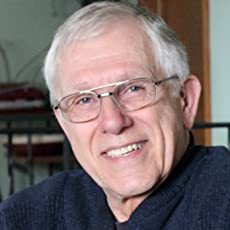
Robert’s surprising answers:
1. Was found unconscious in the school restroom. (Inept gymnast.)2. Fixed a truck with baling wire and drove it home.3. Skied in the Bavarian Alps.4. Enjoyed a European vacation for $24.5. Was a gasoline thief and a hero at the same time.—– This heroic gasoline thief has written a compelling memoir.“Why am I still alive?” That question was in the back of his mind when in 1965, Robert Frohlich was headed out towards Arizona to look for a job after serving in the army for three years. Escaping a splintered family and a troubled past, his car broke down in Wisconsin.Through a series of events that involved finding life-long friends, stable work, and the love of his life, he never left, finally finding a place to stay after wandering for most of his life. However, that was not the first time God caused Robert’s life to change direction, nor will it be the last. By learning to trust in the Lord and let things come as they may, Robert has led a fulfilling life serving God, his family, and his community.Aimless Life, Awesome God is the story of Robert Frohlich, but it is also the story of anyone willing to let God redirect their lives according to His awesome plan.—–What an amazing life, an amazing story of God’s hand on one man, in spite of a broken childhood and even poor choices. I love stories that show God’s surprising nudges in a life through the decades, and the influence of that life on those around him.His website is full of uplifting stories. I hope he’ll share blog posts about some of those five things we don’t not know about him!Here’s a delightful one called “The Big Green Pickle.”Robert has also had two stories produced on Our American Stories. Wheels. Hmm, they seem to have a pretty strong theme through his life.
This heroic gasoline thief has written a compelling memoir.“Why am I still alive?” That question was in the back of his mind when in 1965, Robert Frohlich was headed out towards Arizona to look for a job after serving in the army for three years. Escaping a splintered family and a troubled past, his car broke down in Wisconsin.Through a series of events that involved finding life-long friends, stable work, and the love of his life, he never left, finally finding a place to stay after wandering for most of his life. However, that was not the first time God caused Robert’s life to change direction, nor will it be the last. By learning to trust in the Lord and let things come as they may, Robert has led a fulfilling life serving God, his family, and his community.Aimless Life, Awesome God is the story of Robert Frohlich, but it is also the story of anyone willing to let God redirect their lives according to His awesome plan.—–What an amazing life, an amazing story of God’s hand on one man, in spite of a broken childhood and even poor choices. I love stories that show God’s surprising nudges in a life through the decades, and the influence of that life on those around him.His website is full of uplifting stories. I hope he’ll share blog posts about some of those five things we don’t not know about him!Here’s a delightful one called “The Big Green Pickle.”Robert has also had two stories produced on Our American Stories. Wheels. Hmm, they seem to have a pretty strong theme through his life. Learning to Drive lasts a delightful 19 minutes.3, 2, 1, You’re It! is an 11-minute story.
Learning to Drive lasts a delightful 19 minutes.3, 2, 1, You’re It! is an 11-minute story.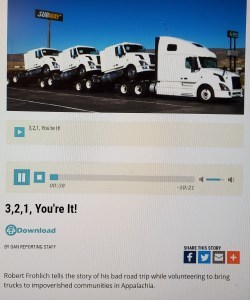
August 11, 2021
Perseids (poem)
Perseids
Earth pirouettesthrough Swift-Tuttle’s trail.Shooting stars flirt by.(2005)August 9, 2021
President Eisenhower at the Iowa State Fair
I was nine years old when I saw President Dwight D. Eisenhower, the first president to visit the Iowa State Fair, during its centennial year in 1954.
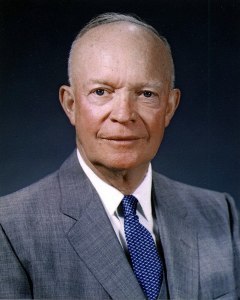
(He was, in fact, the second president I’d seen. The first one was President Harry S. Truman, at the 1948 National Plowing Match at Dexter, Iowa.)
What was also unique about Eisenhower’s visit in 1954 was that former President Herbert Hoover was with him.
“In recognition of the current and erstwhile president’s appearance, the fair’s organizers announced that they would eliminate the admission fee to the annual agricultural spectacle for the duration of the speech. But not everyone was elated at the idea that Iowans could suddenly attend the fair — and see two famous Republicans — for free.”
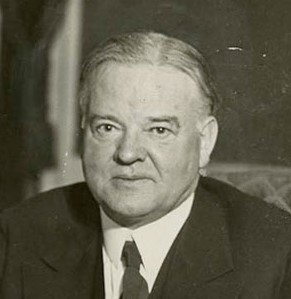
A horse caravan consisting of 509 people, 471 horses and 40 covered wagons traveled from Fairfield (the location of the first Iowa State Fair) to the Fairgrounds in Des Moines to officially open the Fair that year.
Iowa State Fair Trivia
According to Iowa State Fair Trivia, the presidents who’ve come to the Iowa State Fair were Herbert Hoover and Dwight Eisenhower in 1954, Gerald Ford in 1975, Jimmy Carter in 1976 (as a candidate), George W. Bush in 2002, Barack Obama in 2007 (as a candidate) and in 2012 as President, Donald Trump in 2015 (as a candidate); Joe Biden in 2019 (as a candidate), Ronald Reagan broadcasted from the Fair as sports director for WHO radio in the 1930s.
The 2021 Iowa State Fair runs from August 12-22. Since it wasn’t held last year because of the pandemic, people are certainly ready for this one. One “run up” to the fair has been the New Food Feud, with local media personalities involved in the voting.
August 6, 2021
Five Surprising Things about Author Patti Stockdale

Patti Stockdale’s surprising answers:
1. I temped as a receptionist for a professional football team. On day one, I answered the phone with the wrong team name. The caller, the general manager, said, “You’re lucky it’s me.” Excellent point!
2. I’m obsessed with tea. Hot or cold, it doesn’t matter.
3. The sweetest rejection notice I ever received was from Frances Foster, the editor for a Newberry Medal award-winning book. Her letter still hangs on my bulletin board and still makes me smile.
4. I love karaoke. My go-to song: Build Me Up Buttercup.
5. Eli Whitney, the person who invented the cotton gin, is my relative. I still remember my great-grandma, who was a Whitney. Weirdly, my daughter married a man with the last name – wait for it, Whitney.
—–
This karaoke gal’s first historical novel is the delightful Three Little Things.

Debbie Macomber’s endorsement: “I fell in love with Aron and Hattie.”
One forbidden love. Two broken hearts. Three little things.
“A well-drawn cast of supporting characters creates a strong sense of community, and colorful colloquialisms (“whip-thin and homely as a cow pie”) add flavor. Lovers of G-rated historical romance will be charmed by this earnest, emotionally vulnerable connection between these young lovers.” – Publisher’s Weekly
Hattie Waltz should forget the troubled neighbor leaving for boot camp in 1917. He forgot about her ages ago. It had always been the Waltzs verses the Kregers, his family pitted against hers. When she hands him a farewell gift, a chemistry lesson unfolds. The good kind.
Arno Kreger can’t leave Iowa or his old man fast enough. He’s eager to prove his worth on the battlefield and stop blaming himself for his brother’s death. Before entering the train, he bumps into Hattie. He’s loved her forever, always from the sidelines, because nobody crosses Hattie’s pa.
One innocent letter soon morphs into many. Arno and Hattie share three little secrets in each letter and grow closer together. But he’s on his way to a war across the ocean, and she’s still in her father’s house. Their newfound love will need to survive dangers on both fronts.
Three Little Things is a delightful story set during World War I. Filled with a fetching cast of characters and borne along by Patti’s entertaining sense of humor, this is an engaging historical novel on many levels.
I look forward to more of Patti Stockdale’s terrific stories, which are in the publishing process.
Check out her winsome website called “Hope, History, and Happily Ever After.”
Five Things You May Not Know about Author Patti Stockdale

Patti Stockdale’s surprising answers:
1. I temped as a receptionist for a professional football team. On day one, I answered the phone with the wrong team name. The caller, the general manager, said, “You’re lucky it’s me.” Excellent point!
2. I’m obsessed with tea. Hot or cold, it doesn’t matter.
3. The sweetest rejection notice I ever received was from Frances Foster, the editor for a Newberry Medal award-winning book. Her letter still hangs on my bulletin board and still makes me smile.
4. I love karaoke. My go-to song: Build Me Up Buttercup.
5. Eli Whitney, the person who invented the cotton gin, is my relative. I still remember my great-grandma, who was a Whitney. Weirdly, my daughter married a man with the last name – wait for it, Whitney.
—–
This karaoke gal’s first historical novel is the delightful Three Little Things.

Debbie Macomber’s endorsement: “I fell in love with Aron and Hattie.”
One forbidden love. Two broken hearts. Three little things.
“A well-drawn cast of supporting characters creates a strong sense of community, and colorful colloquialisms (“whip-thin and homely as a cow pie”) add flavor. Lovers of G-rated historical romance will be charmed by this earnest, emotionally vulnerable connection between these young lovers.” – Publisher’s Weekly
Hattie Waltz should forget the troubled neighbor leaving for boot camp in 1917. He forgot about her ages ago. It had always been the Waltzs verses the Kregers, his family pitted against hers. When she hands him a farewell gift, a chemistry lesson unfolds. The good kind.
Arno Kreger can’t leave Iowa or his old man fast enough. He’s eager to prove his worth on the battlefield and stop blaming himself for his brother’s death. Before entering the train, he bumps into Hattie. He’s loved her forever, always from the sidelines, because nobody crosses Hattie’s pa.
One innocent letter soon morphs into many. Arno and Hattie share three little secrets in each letter and grow closer together. But he’s on his way to a war across the ocean, and she’s still in her father’s house. Their newfound love will need to survive dangers on both fronts.
Three Little Things is a delightful story set during World War I. Filled with a fetching cast of characters and borne along by Patti’s entertaining sense of humor, this is an engaging historical novel on many levels.
I look forward to more of Patti Stockdale’s terrific stories, which are in the publishing process.
Check out her winsome website called “Hope, History, and Happily Ever After.”
August 4, 2021
My five best books on surprising and compelling WWII stories
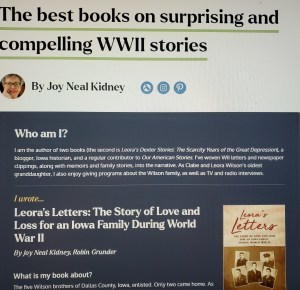
Shepherd.com is a fairly new website and an exciting new way to share books–for readers as well as for a way for authors to share their own books.
The concept is for an author to feature his/her book, and also recommend five related books. Since I featured Leora’s Letters, I chose books of surprising and compelling WWII stories.
Here are the ones I recommended:
U-505: The Lone Wolf of Chicago’s Museum of Science and Industry by James E. Wise, Jr.
Typhoon: The Other Enemy: The Third Fleet and the Pacific Storm of December 1944 by Captain C. Raymond Calhoun
Crosses in the Wind: Graves Registration Service in the Second World War by Joseph James Shomon
LST 388: A World War II Journal by Robert William Von Der Osten, Barbara Von Der Osten
Soldiers’ Stories: A Collection of WWII Memories, Volume II by The Miller Family
—–
Here’s the link to the post on Shepherd.com, where I explain why I chose those specific books.
As a reader, as an author, you’ll want to check out their website.
August 2, 2021
John Busbee, The Culture Buzz
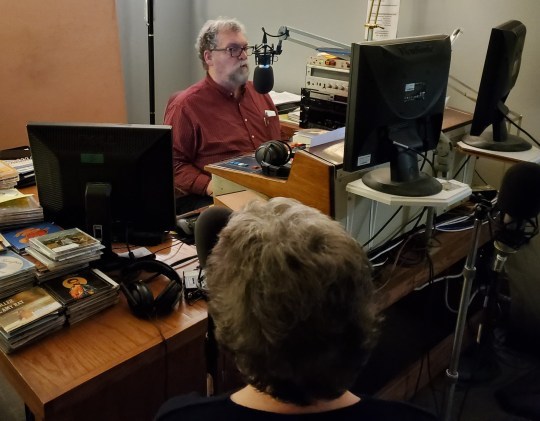
Being interviewed by John Busbee is such a delight. You can tell that John loves what he does, sharing and encouraging authors, musicians, actors, film-makers anything cultural.
He is a writer, director, musician, actor, radio host (Culture Buzz, KFMG-FM), has a weekly newsletter about anything cultural, and a monthly column in Cityview.
John has such a wide range of interests. Two surprising ones were introduced to me in Iowa History Journal. Instrumental in preserving the history of the six Littleton brothers who lost their lives as a result of service in the Civil War, he was very involved with the Littleton Brothers Legacy Project, which culminated in a monument to their memories. He also wrote a story about them for Iowa History Journal and is working on a novel about them.
More recently, I was intrigued to find John’s story about crinoids, in which he makes a case that the prehistoric “sea lily” should be Iowa’s official fossil. Crinoids have been a hobby since his youth.
—–
John Busbee and other man gave a program about the Littleton brothers at a local library. Afterwards I met John and asked when his book about the brothers would be available. During the conversation, I mentioned that I had a book in the publication process. He handed me his business card, asking me to let him know when it was available. He wanted to do an interview about it!
Here’s the interview (14 minutes) at Mainframe Studios:
https://ia803408.us.archive.org/25/items/joy-neal-kidney-aut.-dec-2019-leoras-letters...-online-audio-converter.com/JOY%20NEAL%20KIDNEY%20aut.Dec2019%20_Leora%27s%20Letters..._%20%28online-audio-converter.com%29.mp3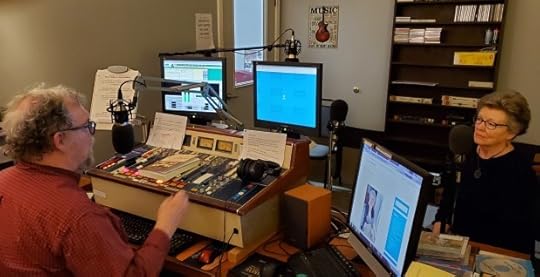 He even has my website pulled up on the right screen.
He even has my website pulled up on the right screen.John Busbee wrote the Foreword for Leora’s Dexter Stories: The Scarcity Years of the Great Depression and also edited it. (Since his name is on the cover, he wanted a copy for his mother. He also hoped it would stimulate family stories of her own.)
July 30, 2021
Delbert, Donald, Dale, Danny, and Junior: You’ll Never be Forgotten
If Cousin Bob has anything to do with it, our Grandma Leora’s family will never be forgotten.
I didn’t know he’d ordered so many copies until much later! He’d been sending a copy to about everyone he could think of.
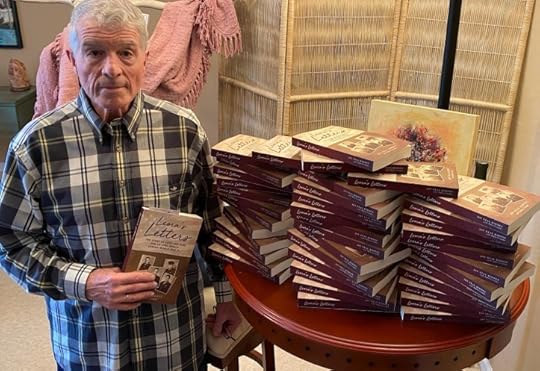
Our mothers are the sisters of the five Wilson brothers. His mother, Darlene Wilson Scar, was Dale Wilson’s twin. Dale was one of the three who never came home. The copilot of a B-25, he was lost off New Guinea on a mission, along with the rest of the crew. Only God knows where their remains lie today.
Bob was born in May 1945, two months after they’d learned that Danny Wilson, a P-38 pilot, was MIA in Europe. Aunt Darlene said that Bob’s babyhood was hazy for her because of those two brothers missing in action.
When I transcribed the letters, during the late 1980s, I noticed that some of the stamps had fallen off. I didn’t think anything about it until Bob told that when they’d visit Grandma Leora in Guthrie Center, that after dinner, especially if one of her brothers was also visiting from Omaha, they’d argue politics.
Bob admitted that he would slip downstairs and read the old letters! He’d read them before I did.
It’s been so encouraging to have a cousin also working to make sure the sacrifice of the Wilson family during WWII is never forgotten.
Bob Scar was a Marine pilot during Vietnam, and enjoyed an aviation career with Delta.
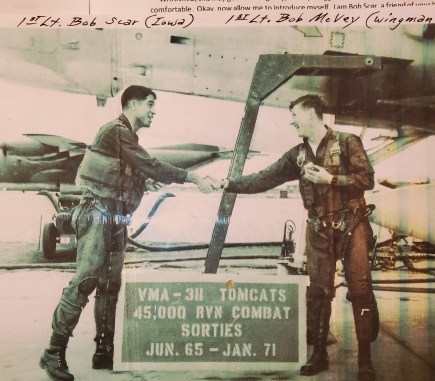
July 28, 2021
Compelling Poems from Jenny Hykes Jiang
Jenny Hykes Jiang grew up in rural Iowa, taught English as a second language in Asia and in the U.S.A., and is now raising children in Northern California. Her poems have appeared or are forthcoming in Arts & Letters, Tule Review, Caesura, The Chestnut Review, Little Patuxent Review, and The Cider Press Review.
Two of her compelling poems have been recently published. She said I could share them with you.
Jenny’s poignant “Bathe All This in Light” was published in Palette Poetry.
Her winsome ode on “Rhubarb” is on pages 2-3 of Chestnut Review.
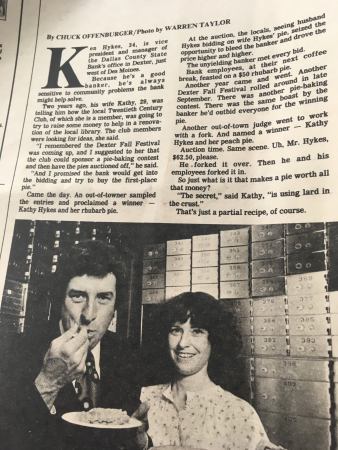
This is a Chuck Offenburger story about Jenny’s dad, then 34 and manager of the Dallas County State Bank’s office in Dexter.
He promised his wife (Jenny’s mom) that the bank would try to win the first-place pie at the Dexter Fall Festival. Yes, rhubarb. It cost him $50!
(Another year, his wife’s peach pie cost him $62.50.)
July 26, 2021
Near Disaster for a One-Egg Cake Headed to the County Fair
My 4-H years were from 1955-1962. Although you could still record activities that overapped, there were three main focuses, one per year: Clothing, Food and Nutrition, and Home Furnishings.
Clothing included choosing items, taking care of them, and sewing new ones. Food and Nutrition focused on making good choices, cooking and canning, gardening, serving, and setting an attractive table. Home Furnishings taught choosing fabrics and colors, designs, refinishing furniture, even repurposing it.
The highlight of each 4-H year was the Madison County Fair. Members of the Penn Gwens lived in Penn Township, which is in the far northwest corner of the county. Our moms were busy farmwives so one would volunteer to take neighbor girls’ fair entries so the others could stay busy with their work.
 Penn Gwens 4-H Club, Madison County, Iowa, July 1957 Standing: Judy Moore, Mary Nevitt, Connie Piatt, Marilyn Lawson, Ruby Ralston, Judy Neal, Janice Lorimor, Susan Shepherd, Gretchen Godby, Shirley Schafer, Joy Neal, Linda Lenocker Seated: Sandra Blohmquist, Jane, Neal, Pat Willrich, Jane Morford, Gloria Neal, Jayne Nevitt
Penn Gwens 4-H Club, Madison County, Iowa, July 1957 Standing: Judy Moore, Mary Nevitt, Connie Piatt, Marilyn Lawson, Ruby Ralston, Judy Neal, Janice Lorimor, Susan Shepherd, Gretchen Godby, Shirley Schafer, Joy Neal, Linda Lenocker Seated: Sandra Blohmquist, Jane, Neal, Pat Willrich, Jane Morford, Gloria Neal, Jayne NevittMom volunteered the summer of 1957, Food and Nutrition year. A popular entry was a One-Egg Cake. Every girl had to follow the same recipe. I baked one to enter that year. So did my younger cousin Jane Neal. (Her sister Judy is in the front row in the photo.)
The moms brought over their daughters’ entries, which we assembled in the back seat of the two-tone Chevy. When we got ready to drive to Winterset, we discovered our cat Minnie in the back seat with white crumbs on her sweet face. She’d enjoyed some of Jane’s cake.
What to do? Did Mom call the County Extension Office? I don’t remember. But she carefully trimmed where Minnie had sampled, and the people checking in the entries probably said things like this happened all the time. I wish I knew what the judge wrote!
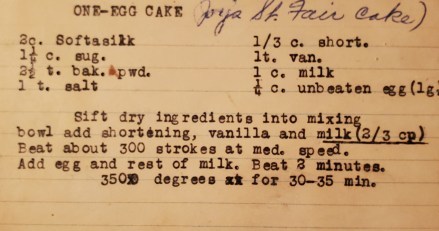
Mine earned a blue ribbon and was chosen to go to the Iowa State Fair. I baked another one for it. In those days, everyone got a blue, red, or white ribbon. A white meant that the judge wasn’t impressed at all. A red ribbon meant mediocre work. We all aimed for blue ribbons. My cake got a red ribbon at the Iowa State Fair that year, but what fun to get to enter.
We learned to keep an eye on Minnie, even around desserts.



